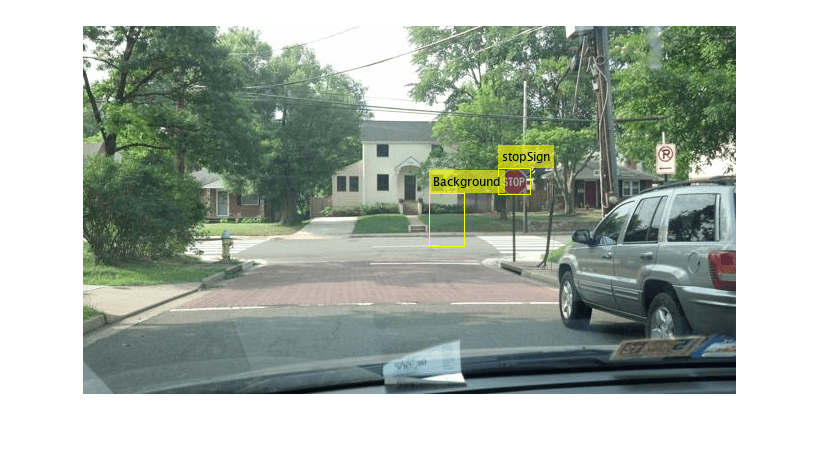classifyRegions
(Not recommended) Classify objects in image regions using R-CNN object detector
The classifyRegions function and R-CNN object detectors are not
recommended. Use a different type of object detector instead. For more information, see Version History.
Syntax
Description
[
classifies objects within the regions of interest of image labels,scores]
= classifyRegions(detector,I,rois)I, using
an R-CNN (regions with convolutional neural networks) object detector. For each region,
classifyRegions returns the class label with the corresponding
highest classification score.
When using this function, use of a CUDA® enabled NVIDIA® GPU is highly recommended. The GPU reduces computation time significantly. Usage of the GPU requires Parallel Computing Toolbox™. For information about the supported compute capabilities, see GPU Computing Requirements (Parallel Computing Toolbox).
[___] = classifyRegions(___
specifies options using one or more name-value arguments in addition to any combination of
arguments from previous syntaxes. For example,
Name=Value)ExecutionEnvironment="cpu" classifies objects within image regions
using only the CPU hardware.
